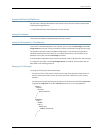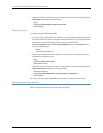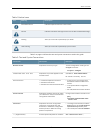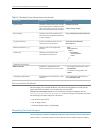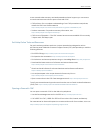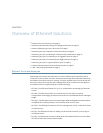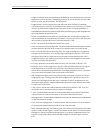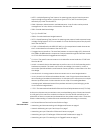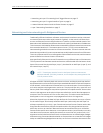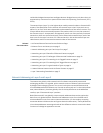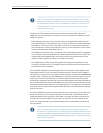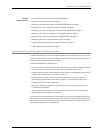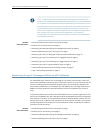
CHAPTER 1
Overview of Ethernet Solutions
•
Ethernet Terms and Acronyms on page 3
•
Networking and Internetworking with Bridges and Routers on page 6
•
Network Addressing at Layer 2 and Layer 3 on page 7
•
Networking at Layer 2: Benefits of Ethernet Frames on page 9
•
Networking at Layer 2: Challenges of Ethernet MAC Addresses on page 10
•
Networking at Layer 2: Forwarding VLAN Tagged Frames on page 11
•
Networking at Layer 2: Forwarding Dual-Tagged Frames on page 13
•
Networking at Layer 2: Logical Interface Types on page 14
•
A Metro Ethernet Network with MX Series Routers on page 15
•
Layer 2 Networking Standards on page 17
Ethernet Terms and Acronyms
Networking with a switch over Ethernet on a LAN is different than networking with a
router with IP over a wider area. Even the words used to talk about Ethernet networking
are different from those used in IP routing. This topic provides a list of all the terms and
acronyms used in the Junos OS Layer 2 Configuration Guide, as well terms that apply to
a complete network using Ethernet as a carrier technology.
•
802.1ad—The IEEE specification for “Q-in-Q” encapsulation and bridging of Ethernet
frames.
•
802.1ah—The IEEE specification for media access control (MAC) tunneling
encapsulation and bridging of Ethernet frames across a provided backbone-managed
bridge.
•
802.3ag—The IEEEspecification for awide rangeof EthernetOperations, Administration,
and Maintenance (OAM) features. See also OAM, CFM, and ETH-DM.
•
802.3ah—The IEEE specification for link fault management (LFM), a method for OAM
of Ethernet links.
•
802.1Q—The IEEE specification for adding virtual local area network (VLAN) tags to
an Ethernet frame.
•
B–MAC—The backbone source and destination MAC address fields found in the IEEE
802.1ah provider MAC encapsulation header.
3Copyright © 2010, Juniper Networks, Inc.



